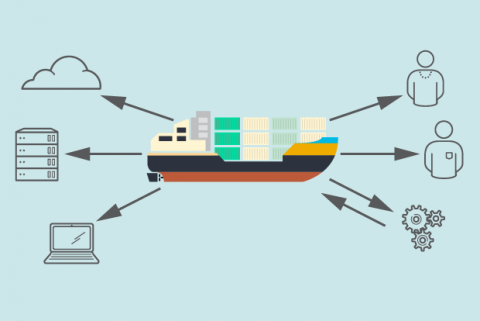Containers are increasingly the preferred method for software developers to streamline and bring more agility and flexibility to their operations. However, the process of moving containers from a controlled environment of a prototype or proof of concept project into a production IT environment at scale requires enterprises to significantly change how they run and think about IT. Like any digital transformation initiative, it’s a departure from the status quo, and it often leaves enterprises asking how they can successfully implement containers for themselves.
[ Get the free eBooks: Getting Started with Kubernetes and O'Reilly: Kubernetes Operators: Automating the Container Orchestration Platform. ]
5 container adoption best practices
To push past early challenges such as organizational inertia, adapting processes, and difficulties in choosing the right container technologies, enterprises must focus on five key lessons. If done properly, this can transform their development journey and revolutionize their organizational flexibility.
1. Standardization is the path to success
The sheer quantity of technological choices in the average IT environment is enough to overwhelm any IT decision-maker. There are so many operating systems, virtualization environments, hardware vendors, and cloud service providers that it’s easy to suffer from decision paralysis.
To overcome this, the first step is to standardize the operating system. Linux is a good choice for enterprises looking for sustained innovation because its active open source community allows for continued injections of next-generation technologies.
Look for a standardized and secure platform that is open across a variety of different cloud environments. This means that IT infrastructure can remain stable despite different use cases or workloads. The resulting innovation and agility can pay off dramatically.
An enterprise Kubernetes platform offers additional benefits as you scale the number of containers, which often happens in concert with an organization embracing the DevOps and agile ways of working. Those benefits include workload portability, time savings, and security/stability.
[ Read also: 3 reasons to use an enterprise Kubernetes platform.]
2. Automate wherever possible
Once things are standardized, automation should be employed wherever possible. This includes development and operations processes, but it can also be done for business processes. This frees up critical time spent on the back end, allowing you to focus on customer experience and broader innovation. This goes a long way in ensuring that the containerization process is smooth and successful.
However, beware of setting up automation and simply leaving it to run in the background. You need to play an active role in ensuring that it continues to perform the tasks that you need it to, as business processes can change due to new technologies or an influx of customers.
3. Collaborate, collaborate, collaborate
Anyone who has been involved in a digital transformation initiative can confirm the importance of breaking down silos. Digital transformation requires modernization across the entire organization, and each business unit will see the tangible impact of new technology like containers even if they don’t understand the technology.
This means that IT leadership and business operations leadership cannot be at odds during transformation. They must align to identify business outcomes. When evaluating container adoption, ensure that these teams are collaborating together to find an outcome-driven use case best suited for your organization. Additionally, in this complicated IT environment, it can be incredibly useful to collaborate with other organizations that already have processes in place to identify these business outcomes, rapidly generate prototypes, and quickly elucidate the business value that comes from containerization.
[ Read also: 5 open source projects that make Kubernetes even better, by Gordon Haff. ]
4. Security is paramount
Containers themselves do not automatically make the contents inside secure. A constant fear of moving containers to the cloud – especially in hybrid environments where some technologies are not suited for certain platforms – is the security concern that this transition raises. Consider adopting platforms that are ready for your most important workloads but are also automatically patched and proactively remediated. If you aren’t continuously scanning container images, they can become less reliable and secure.
[ Read also: How to automate compliance and security with Kubernetes: 3 ways. ]
5. Modernize your culture
Modernizing organizational culture is just as important as modernizing the technology undergirding it. Fostering a culture of collaboration, as discussed above, must be an intentional process, and it will not happen naturally even with the best technological solutions. With the new speed and agility that comes with IT modernization, you must ensure that your teams are embracing this agility to move fast and drive innovation.
As former Red Hat CEO and now IBM president Jim Whitehurst says, “Culture is the output and not the input.” By building the right culture of collaboration, you can truly leverage the adoption of containers to their fullest potential.
Don't contain your enthusiasm
Consider all five of these lessons as you embark on your containerization journey. Addressing each one will not only smooth your adoption of containers but will help you transform your organizational culture and simplify workflows across the enterprise.
[ Kubernetes 101: An introduction to containers, Kubernetes and OpenShift: Watch the on-demand webinar.]




